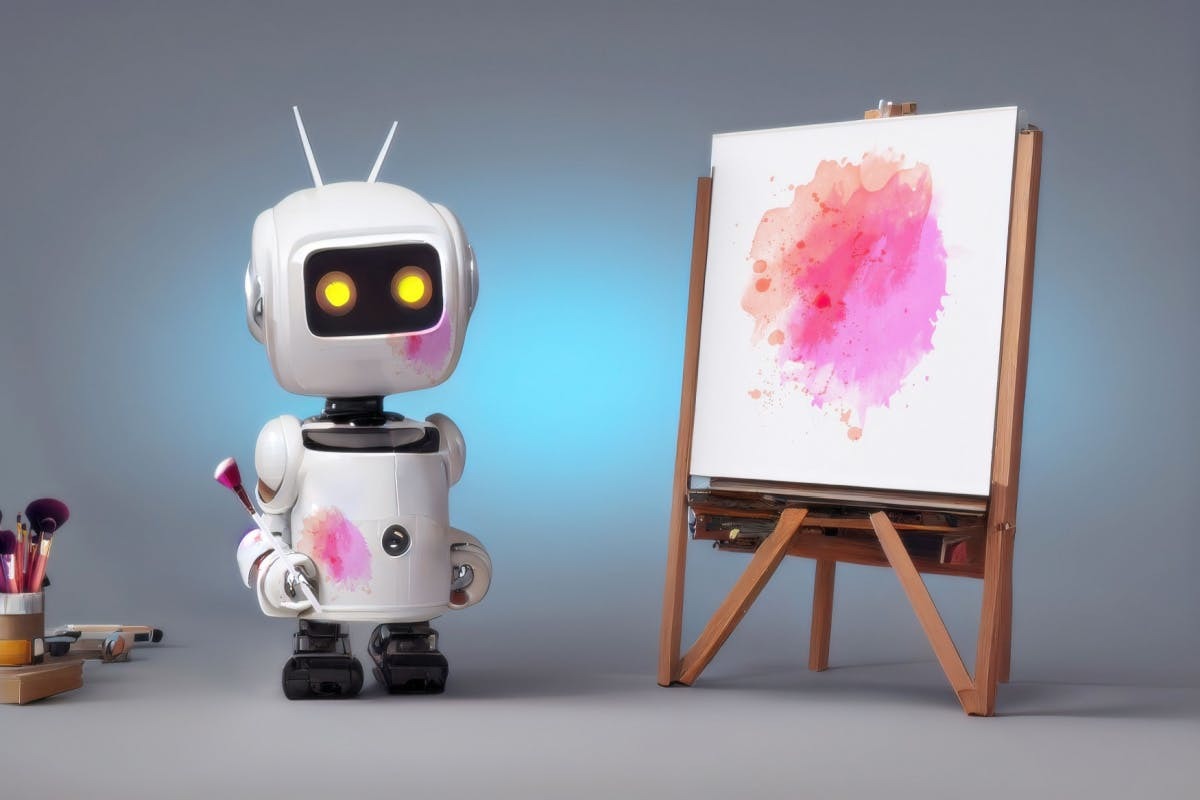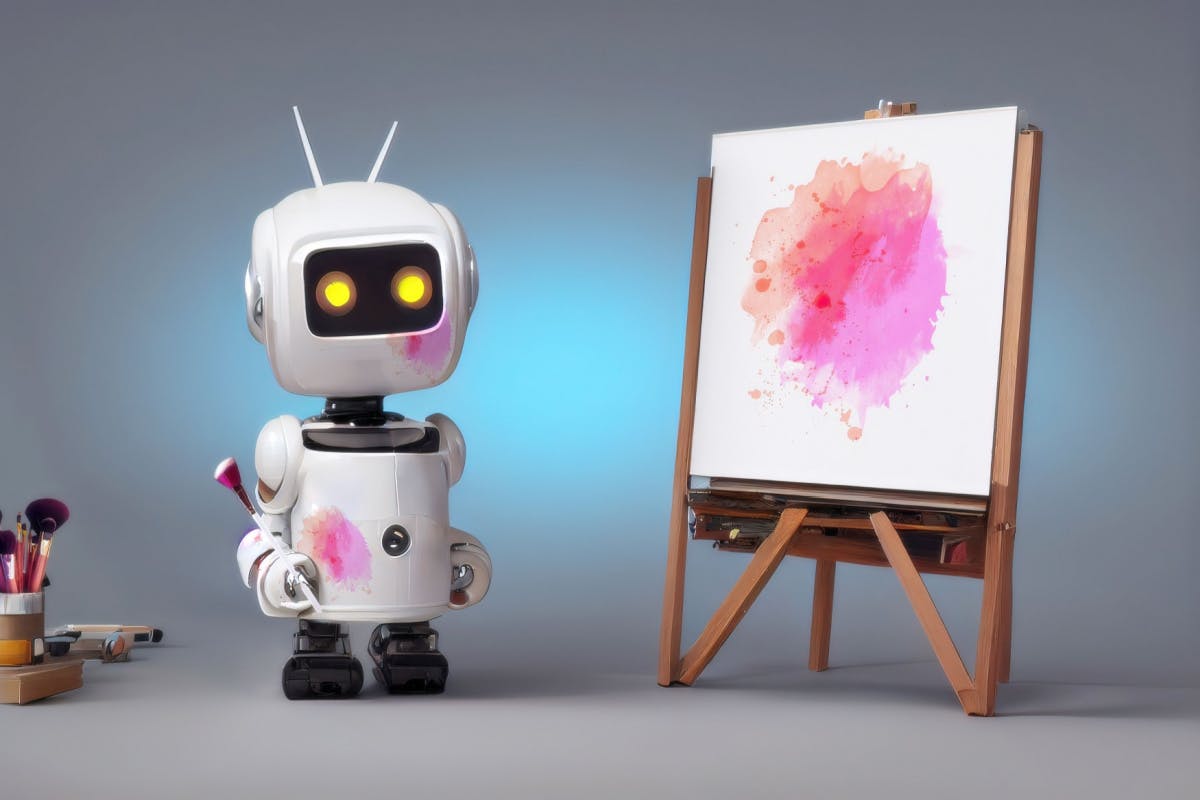 Every day now, and in about half of all the meetings and conversations I have, generative AI makes an appearance.
Every day now, and in about half of all the meetings and conversations I have, generative AI makes an appearance.
But GenAI isn’t just a topic of conversation, and it’s not just changing marketing in some theoretical future, it’s now becoming part of marketing’s day-to-day practice.
So I wanted to share some examples of GenAI/AI from seeing them up close and in use right now. No hyperbole, no future-gazing, no anxiety-inducing ‘you’re falling behind if you’re not using these 1,000 GenAI tools right now’ Twitter hustle; just a few practical examples of it in use now across marketing and brand strategy, media, creative, production and measurement to give a personal perspective on the state of the nation.
Today’s AI applications in marketing
1. Audience segmentation, category and brand research
One startup I spoke to last week uses large panels of synthetic consumers to generate market research, brand health reports, segmentation studies, pricing and category entry-point analysis – technical, arduous work that would normally take weeks, but that can now be done overnight. They say it’s already at 90% accuracy versus the equivalent analysis using real humans analysing real human data. Essentially it’s able to get a fix on any brand’s ‘share of model’ from a number of dimensions. Marketing Week’s Mark Ritson talked about synthetic data and the academic work this builds on last year, but the practical application of that theoretical academic work is starting to emerge.
Another startup, Voop, has built a beautifully simple consumer insight tool using GenAI to instantly analyse and summarise consumer insights in voice or text, as well as suggesting next steps and actions. It’s still in beta, but when you see it, a wide range of different practical applications will jump out at you depending on where you sit in the industry.
2. Strategy and briefing
Another firm, Briefly, is a GenAI platform that’s already helping marketers in several Fortune 500 companies, including Dell, to write faster and create better internal briefs. Think Grammarly for marketing briefs.
At the next stage of the strategy journey, Strat.GPT is a tool built by my employer Jellyfish’s strategists and engineers as a brand strategy co-pilot. It’s assisting us on many of our live creative pitches and campaign briefs right now.
Jellyfish’s Strat.GPT tool helps in developing creative pitches
It’s especially good at helping our strategists gather audience insight and generate propositions. I’ve personally tried to push it to generate new communications platforms for clients – it’s not yet as good as humans at this but, with a tight brief, does a pretty good job of generating creative thought starters for our human creatives to beat.
3. Creative development and production
The Brandtech Group, Jellyfish’s owner, has its own GenAI platform called Pencil, which our creative people across the group are using to help produce paid social ads faster and in greater quantities, and with double the short-term performance on average. It’s already been used in over $1bn of ad spend across 5,000-plus brands and a million-plus ads, including for the Deckers Group portfolio, where it can correctly predict the best performing social creative from the new ads it generates for brands such as Ugg.
Paid social ads for Ugg generated using Brandtech’s Pencil tool
Sitting a little higher up the marketing funnel is Gravity Road’s work for Hotel Chocolat’s Velvetiser product, which relied heavily on GenAI in both the development of the creative concept and its production, where GenAI was fused with the CGI process. The resulting TV ad was the first one assisted by GenAI to score a maximum star rating of 5.9 on System1’s testing methodology. It was the highest score the company has ever seen for a TV commercial in the domestic appliance category (maybe because ads for chocolate tend to evoke more emotion and so score a bit higher on average) and in the top 0.3% of ads tested globally.
4. Media
It’s been a cause of much annoyance to people at the major digital platforms, who’ve been using AI for some time, that they’ve never had anything like the headlines that the people now using GenAI have been getting recently. But AI has been part of Google’s ad bidding processes for years, as well as fully powering newer products like Performance Max.
Similarly Meta’s Advantage+ uses AI to eliminate the manual steps of ad creation and to automate the generation of a huge number of creative combinations. So the practical reality, for many billions in ad spend globally, especially in the performance space, is that AI already plays a big role in delivering it, albeit with little fanfare.
5. Measurement
The data company Creative X uses AI to rapidly assess the creative quality of thousands of advertising assets for over 1,000 agencies and 3,000 brands globally, including major advertisers like Unilever, Nestlé, Diageo, Bayer and Mondelez.
Its analysis of $1.3bn of ad spend last year (itself done at a scale that couldn’t have been done without AI) resulted in the alarming stat that 50% of digital ad budgets go behind creative that isn’t ‘fit for platform’. It’s a claim that should have us all turning more attention to whether 100% of our ads conform to basic platform best practice, and a bit less attention to whether the top 0.1% pick up a Lion at Cannes.
AI is now helping enhance creative testing and measurement, with platforms like DAIVID and Realeyes having trained models to predict the likely human response to ads in terms of attention, emotion and memory, allowing creative testing to be done at a scale that would be cost-prohibitive with human respondents.
AI blending into the background
So GenAI and AI are already being deployed across nearly every stage of marketing and brand strategy, media, creative, production and measurement, by brands of every type and size. There’s already a huge range of marketing use cases (and I’ve only really scratched the surface here).
And depending on the speed of uptake of tools like these across the marketing world, it could soon be so ubiquitous that it might just blend into the background as great new technology so often does – it will become utterly normal, even unremarkable. Or, as Benedict Evans said recently in an interview with Contagious, “AI will just be software”.
Now, I’ve never been a technology obsessive. In fact, historically I’ve been more interested in what doesn’t change (human nature, our brains, our motivations) than what does (the tools we use to create and distribute communication).
I rarely make predictions, but it does seem like we’re witnessing a platform shift of major significance to our industry, in some ways that are becoming clear now, but in others that will only reveal themselves over the coming years.
Let’s not throw out what we know about what works – let’s build that into the technologies we’re developing.
Billions are pouring into GenAI startups, and many of those are in marketing. People both in their daily lives and their work lives are adopting these technologies. Marketing people are probably adopting them faster than non-marketing people as they always do, so we do need to be careful about overestimating the speed of adoption overall from the speed of adoption by marketers.
But it’s plainly started to change things in our day-to-day work, and it’s doing so largely by helping people do some of their more repetitive work faster, helping save time and money.
What’s less clear is whether it’s being used quite as much to help people do things that are loads better – more actionable insight, more intelligent strategies, more impactful creative, more effective (and not just more efficient) marketing. It’s in our hands as marketers to make sure that’s the case if that’s the future we want, because the investors and many of the AI experts and engineers are naturally going to be less concerned than us with the quality of output as an objective. I suspect they’re often less aware of what quality looks like than current practitioners. So let’s not throw out what we know about what works – let’s build that into the technologies we’re developing.
Shaping future roles
No one can possibly know exactly how this will impact our working lives. It’s going to be a cause for excitement and opportunity for some, uncertainty and anxiety for others, and probably a mix of both for most. I suspect many will have a sense that there is this ‘thing’ happening to them that is racing ahead, out of control, causing them both anxiety and excitement about the future.
The Account Planning Group (APG), whose committee I sit on, is setting up an AI working group to help shape the future of AI for planners and strategists, by working through the consequences and opportunities, harnessing the excitement but also hopefully helping to alleviate some of the uncertainty – to help make sure brand strategists feel they can shape GenAI in their roles, not have GenAI shape them. And as chair I’ll soon be putting out a call for people to get involved and work together in a spirit of competitive collaboration.
Whilst the output will mainly be for the small advertising planning and strategy community, we hope there will be useful learnings for everyone across the wider marketing world. And maybe it will inspire other parts of the industry to lead similar initiatives to help people navigate the change – both positive and negative, as all change always is.
Lire l’article complet sur : www.marketingweek.com



Leave A Comment